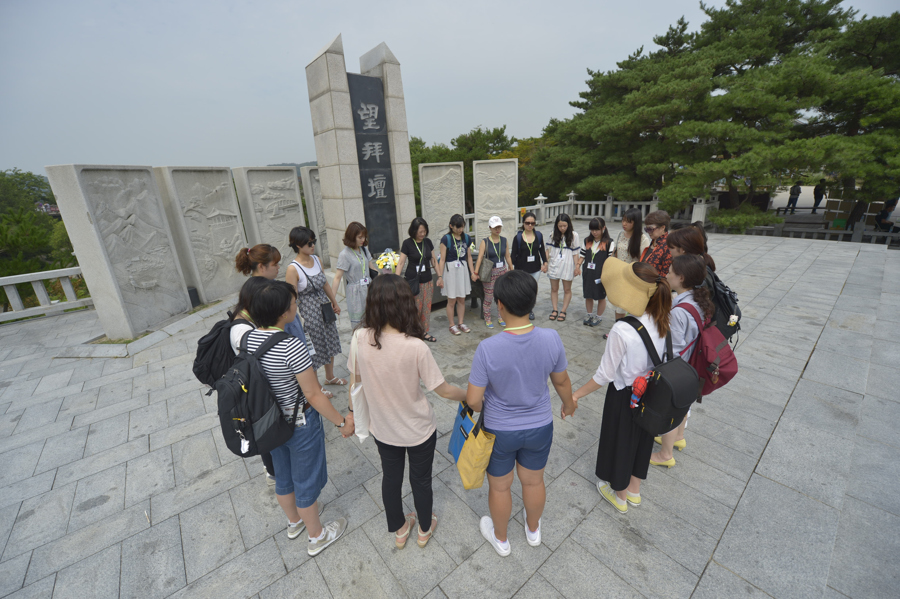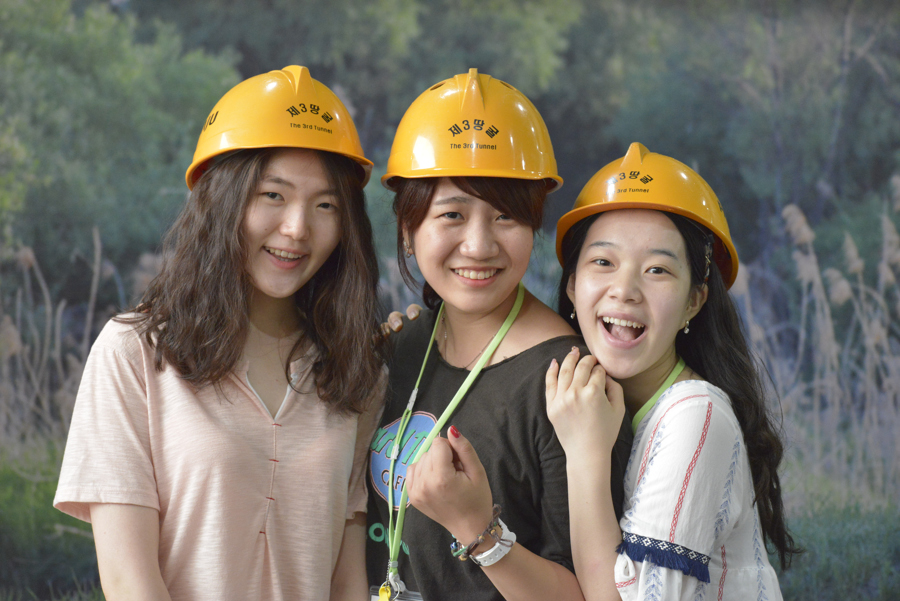Global Lens Reflections on life, the universe, and everything
2016 – A year in photos
There’s a military phrase that, despite my aversion to military terms, works well for photography. Some places I visit are clearly “target-rich environments,” in that it’s hard not to capture compelling images because the people and their surroundings are so beautiful. I’m not referring to some misplaced sense of the exotic. People aren’t interesting just because they’re different from me, but rather because their strength and resilience and spirit easily show through. And when they happen to live among some of the world’s most rugged mountains, all the better. That’s why I had always wanted to go to Nepal, and finally this year I got a chance.
The country suffered a massive magnitude 7.8 earthquake in April 2015, and I went a few weeks before the quake’s anniversary this year in order to prepare images, video and interviews that would help the member agencies of the ACT Alliance to interpret their humanitarian response to their constituents. I also worked on a piece about the country’s YWCA, which is supported by United Methodist Women, and I covered the work of Katherine Parker, a United Methodist missionary who is doing fascinating work empowering village women to better understand and respond to local issues of water quality.
Most of the time, however, I worked on the quake response. It was a fascinating time to evaluate the response of the government and NGOs. And thanks to some dedicated staff from Dan Church Aid and the Lutheran World Federation, I got to some remote communities that had been heavily affected by the quake and were still struggling with its aftermath.
This is Bishnu Kumari Banjara, who here holds two of her goats in Dhawa, a village in the Gorkha District. After the quake she received several baby goats from Dan Church Aid as a way to earn a livelihood and help kickstart the ravaged village’s economy. She lives in a Dalit village–the lowest caste in Nepal’s complicated weave of caste and class–which were priorities for agencies like Dan Church Aid. I call her the Goat Whisperer.
I also spent a day shooting some UMCOR-sponsored reconstruction work, including schools.
I can’t deny there’s a certain cute factor at play in photographing Nepali children.
The role of women in the reconstruction process was an issue in many places, and I had the luck to be in one rural village on March 8, International Women’s Day, when local women staged a march to make clear their desire to be included.
My year was a bit shorter than normal because I spent October and November speaking in churches that support my work. But that still left a few months to get around. For example, I traveled to South Korea to cover a peacebuilding seminar between young women from Japan and South Korea. Those are two countries with a long history of animosity, and these young women addressed those issues head on, including the painful experience of sexual slavery suffered by the so-called comfort women. Supported by United Methodist Women, the seminar allowed ordinary people to make friendships across tense international lines. We spent one day on a trip to the DMZ, where the women donned helmets to explore a tunnel allegedly dug by North Korea in an attempt to breach the cease-fire line.


As Colombia staggered toward finally ending its decades-long civil war, I went there to write about the role of the churches in the peace process. I also traveled to the violence-torn region of Barrancabermeja to see what peace could look like on the ground. That meant spending time with Doris Maria Trillos, who is seen here raking cacao drying in the sun outside her home in Garzal, a remote community along the Magdalena River. People in this community have struggled for years to stay on their land, despite threats and violence from drug traffickers and paramilitaries, and the success or failure of the peace process will best be measured in such communities. After that there’s a photo from alongside a highway in Barrancabermeja, where hundreds of people maintained a presence protesting government policies. The protest was part of a nationwide agrarian strike which at times closed major roads. In this image, during a dialogue between protestors and a police, a police official claimed none of his officers had mistreated anyone. At that point a protest leader whips out his phone and shows they guy a video of just the opposite. (I love the democratization of image making technology.) Following that is a brief video that I made for my supporting congregations. It was made as I came back from spending two days in Trillos’ village.
It’s no secret that I would much rather be traipsing around the jungles of Colombia than be in a meeting, much less photograph one. But I make exceptions, at times, one of which is the quadrennial United Methodist General Conference, which took place this year in Portland. Fortunately it wasn’t all just people standing at microphones. Here’s a protest that disrupted the plenary session.
One of the visual challenges in a meeting like this is capturing images that speak for themselves. That could mean a closeup of demonstrators wearing rainbow tape over their mouths (protesting the denomination’s exclusion of LGTBQI+ voices), or a photo of Bruce Ough, the president of the Council of Bishops, presenting a proposal to defer decisions about sexuality and hand them over to a special commission. By upping the f/stop I could capture both the bishop’s face as well as the text on the screen far behind him. (Hmm, I guess the fact that I just explained each of the two photos means they didn’t speak so well for themselves!)
I also loved playing with the light in the plenary hall, what was essentially a huge dark room. That light could be harsh, and its white balance often presented a challenge. But it could also be used to isolate a subject against a black background, such as in this image of Bishop Elaine Stanovsky. It was a good choice, since she became my bishop a few months later. It’s my policy to take good images of my bishop, who reappoints me to my job every year. So any time you need good pictures, Bishop Stanovsky, I’m your guy.
In a trip to Tanzania, I documented the work of a church-related agency that’s improving health at the grassroots. So I photographed the testing of children for Lymphatic filariasis, as well as the lives of people, like Paulina Manyabweni, who live with the crippling mosquito-borne disease.
I also spent a day documenting cervical cancer screening in a hospital in the remote village of Shirati. The staff and patients were wonderful in helping me get the photos I needed while respecting everyone’s dignity. The first image shows nurse Moureen Mbise doing an exam. After that, Mbise comforts Sherida Katibu as nurse Joyce Agutu uses a cryoprobe to perform cryotherapy on her.
Given the alarmingly high rates of cervical cancer in sub-Saharan Africa today, these women are heroes.
I spent some time this year in the Philippines, working on a variety of stories, including churches responding to the epidemic of extrajudicial executions that followed the election of President Rodrigo Duterte. There’s a piece on human trafficking in the works. And I also spent some time with indigenous communities on the island of Mindanao. They have long been under attack by paramilitary squads that protect giant mining companies, palm oil plantations, and other enterprises that steal land from indigenous communities to make a handful of people very rich. I covered some of their protests, and spent time in a church compound in Davao where hundreds have sought sanctuary from the violence.
I also just chilled out and listened to 98-year old Tonding Maguan sing and play a hegelung at her home in Tboli, an indigenous village on Mindanao. Maguan is blind.
I traveled to northern Iraq to document the lives of Christians, Yazidis, and others who were driven out of their homes in Mosul and Qaraqosh by the Islamic State group in 2014. Tens of thousands now live in cramped camps for the displaced around Erbil.
It’s a community in which the church has huge influence and importance.
It’s a people whose faith has kept hope alive amid the tragedy of losing homes and neighborhoods. Here’s 4-year old Luis Firas, whose mother blesses him every morning by using a stick of oil to make the sign of the cross on his forehead before sending him off to school. The morning I was there to document their daily life, Luis then rather impishly grabbed the tube of oil and anointed his mother as well.
Some of the displaced are not content to simply wait and pray, and I spent a day with the Nineveh Plain Protection Units as they practiced for the fight they knew would soon come, and which has indeed taken place in the last few weeks as a coalition of Iraqi forces, Kurdish Peshmerga and others have slowly fought their way toward Mosul.
That fighting, of course, is not without cost. Here’s Rosa Majeed Nouri holding a photo of her son Fawaz at her home in a camp for displaced Iraqis in Dawodiya. He was killed in February while fighting against ISIS near Telskuf.
One highlight of my Iraq trip was getting to know the Dominican Sisters of St. Catherine of Siena, an Iraqi order that fled Mosel and Qaraqosh along with their neighbors. Despite their own suffering, they have remained faithful servants and witnesses in the midst of exile, accompanying other displaced.
I happened to be home in Yakima on Martin Luther King Day, so photographed a local march honoring the martyred civil rights leader.
I spent some time in the U.S. State of Georgia, documenting the work of mission institutions in Savannah and Columbus that promote financial literacy among women and do some creative and life-changing work to help women get out of poverty. I wrote about Sonnet Pichardo, for example, who is pictured here as she helps her daughters get ready for school in their bedroom early in the morning in Columbus. Pichardo successfully participated in Circles of Hope, a program to end poverty and build financial independence sponsored by the Open Door Community House.
Every two years, I cover the International AIDS Conference, which this year took place in Durban, South Africa. It’s a fascinating environment to examine how we’re doing in the struggle against a major public health challenge. Yes, it is one more “meeting,” but among almost 20,000 participants something visually interesting usually breaks out, whether it’s an aerobics class (with HIV and TB participating) or a street demonstration turned choir performance.
Not all the year was work. I fortunately escaped a couple of times to turn my lens on subjects close to home, including hummingbirds on Whidbey Island and a meteor shower at Frenchman’s Coulee in Eastern Washington. Both of these images happen to be part of a selection of my photos that the Langley United Methodist Church is offering for sale as a way to raise money to help upgrade my equipment. They are available both as regular prints and as canvas prints stretched over a frame made from sustainably harvested wood. Take a look at what’s available. Imagine what they’d look like on the walls of your home or office.
The last year has been always challenging and often enjoyable. The months ahead are unfortunately going to prove more difficult, as recent election results in the U.S. mark a giant step backward toward xenophobia, hatred, and a criminal lack of stewardship for our beleaguered planet. I’m committed to continuing to tell people’s stories. Each of you can help in making sure the stories are not told in vain.









































